Exploring New Teams SlimCore Changes for Microsoft Teams on Azure Virtual Desktop and deploy with PowerShell
Microsoft Teams has become an indispensable tool for collaboration, and its integration with Azure Virtual Desktop (AVD) has brought even greater flexibility for remote work. Recently, in June 2024, Microsoft introduced some exciting changes in the preview for Teams, including the new SlimCore architecture. This blog will explore these changes, their benefits, and how to get started with the preview.
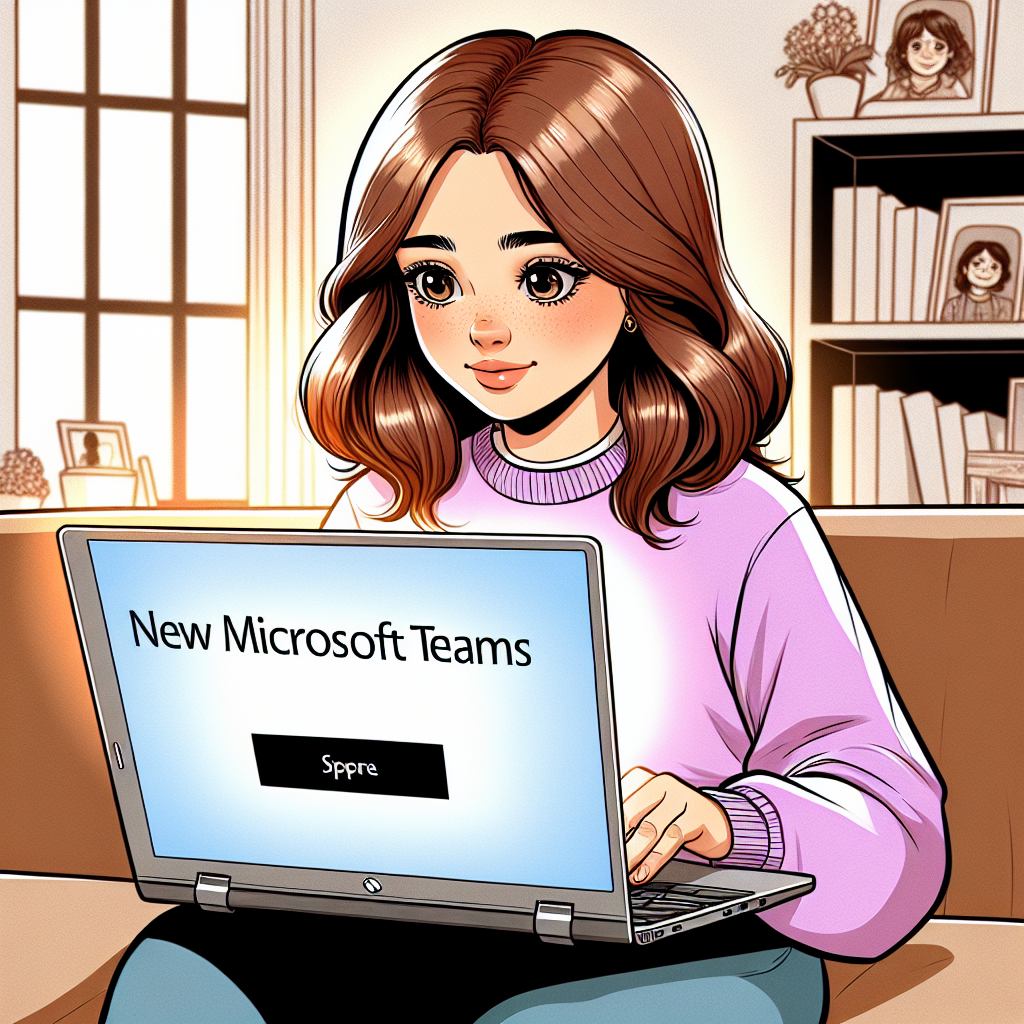
Classic Teams vs. New Teams
Before diving into SlimCore, it’s essential to understand the distinction between Classic Teams and New Teams. Both versions can be used with Azure Virtual Desktop, offering feature parity. However, New Teams brings significant improvements in performance, reliability, and security, making it a superior choice for many organizations.
Media Optimizations in Teams on Azure Virtual Desktop
One of the key features of Teams on AVD is media optimization, which supports chat, collaboration, calling, and meeting functionalities. These optimizations redirect media processing to the local device, enhancing performance and reducing latency when using the Windows App or Remote Desktop client on supported platforms.
Introducing SlimCore
New Teams can leverage either SlimCore or the WebRTC Redirector Service. SlimCore, currently available in preview, promises to enhance the Teams experience further. To use SlimCore, you must opt into the preview. Here’s what you need to know about SlimCore:
Performance: SlimCore aims to deliver better performance compared to the existing WebRTC Redirector Service.
Reliability: It enhances the reliability of Teams, ensuring seamless communication and collaboration.
Security: Improved security features protect your data and communication within Teams.
How to Opt-In to SlimCore Preview
To start using SlimCore, follow these steps:
- Enroll in the Preview: Opt-in to the SlimCore preview through your Teams settings or your organization’s IT admin portal.
Setting the Update Policy
Public preview is enabled on a per-user basis, and the option to turn on Public preview is controlled in an admin policy. Update policies are used to manage Teams and Office Preview users who will see pre-release or preview features in the Teams app. You can use the Global (Org-wide default) policy and customize it, or create one or more custom policies for your users. The policy needs to be assigned to specific users because it doesn’t overwrite the global policy.
- Sign in to the Microsoft Teams admin center.
- Select Teams > Teams Update policies.
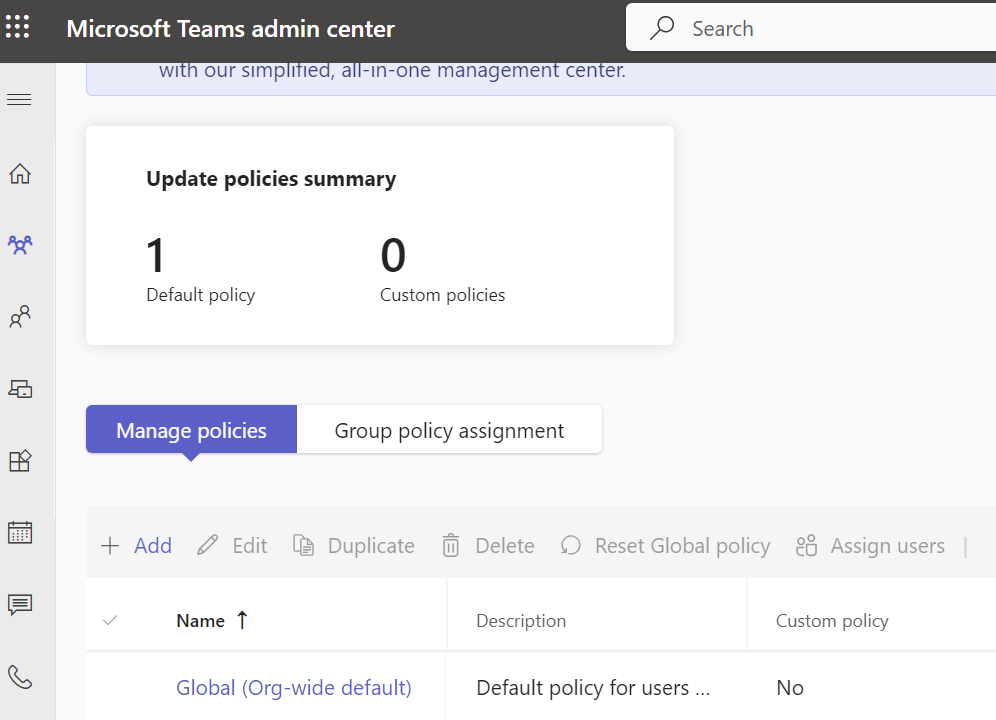
- Select an existing policy or select Add to create a new one.
- Name the update policy and add a description.
- Select the setting for Show Teams preview features:
- On for users in Current Channel (Preview) (default): This default option turns on Teams Public preview features for any user enrolled in Office Current Channel (Preview). Users enrolled in Office Current Channel (Preview) can’t turn off Teams Public preview.
- Users can opt in: This option enables Teams Public preview regardless of whether a user is enrolled in Office Current Channel (Preview). The users must turn on Teams Public preview in their Teams app because it isn’t enabled by default for them.
- Off: Teams Public preview features aren’t available to users.
- On for everyone: This option turns on Teams Public preview regardless of whether a user is enrolled in Office Current Channel (Preview). Users can’t turn off Teams Public preview.
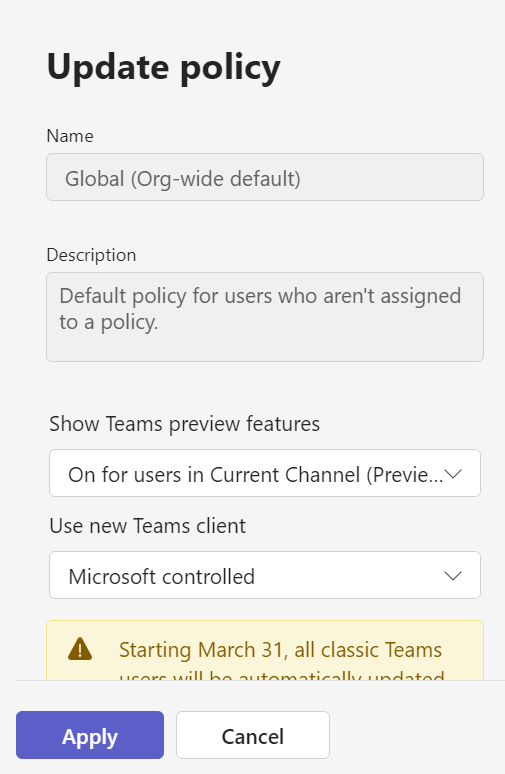
- Select Apply.
Enable Public preview
To enable Public preview on a desktop or web client, perform the following tasks:
You can also set the policy using the PowerShell Set-CsTeamsUpdateManagementPolicy cmdlet.
- Select Settings and more (…) next to your user profile.
- Select Settings > About Teams.
- Under Early access, select the Public preview checkbox.
Users who are in new Teams client will see early Access indicator under Settings -> About Teams
2. Install the WebRTC Redirector Service: This step is crucial for ensuring a smooth transition and fallback capabilities.
3. Configure AVD: Make sure your Azure Virtual Desktop environment is set up to support the new optimization architecture.
For detailed instructions on opting into the preview, refer to the official https://docs.microsoft.com/en-us/microsoftteams/new-vdi-solution-for-teams
Why Install the WebRTC Redirector Service?
The WebRTC Redirector Service is essential even if you’re using SlimCore. It provides a fallback mechanism, ensuring users can continue to use Teams seamlessly if they switch between devices that may not support SlimCore. This flexibility is crucial for maintaining productivity in dynamic work environments.
Benefits of Using SlimCore
1. Enhanced User Experience: With better performance and reliability, users can enjoy smoother meetings and calls.
2. Improved Security: SlimCore’s enhanced security features ensure your communication is protected.
3. Seamless Device Roaming: The fallback to WebRTC ensures that moving between different devices is a hassle-free experience.
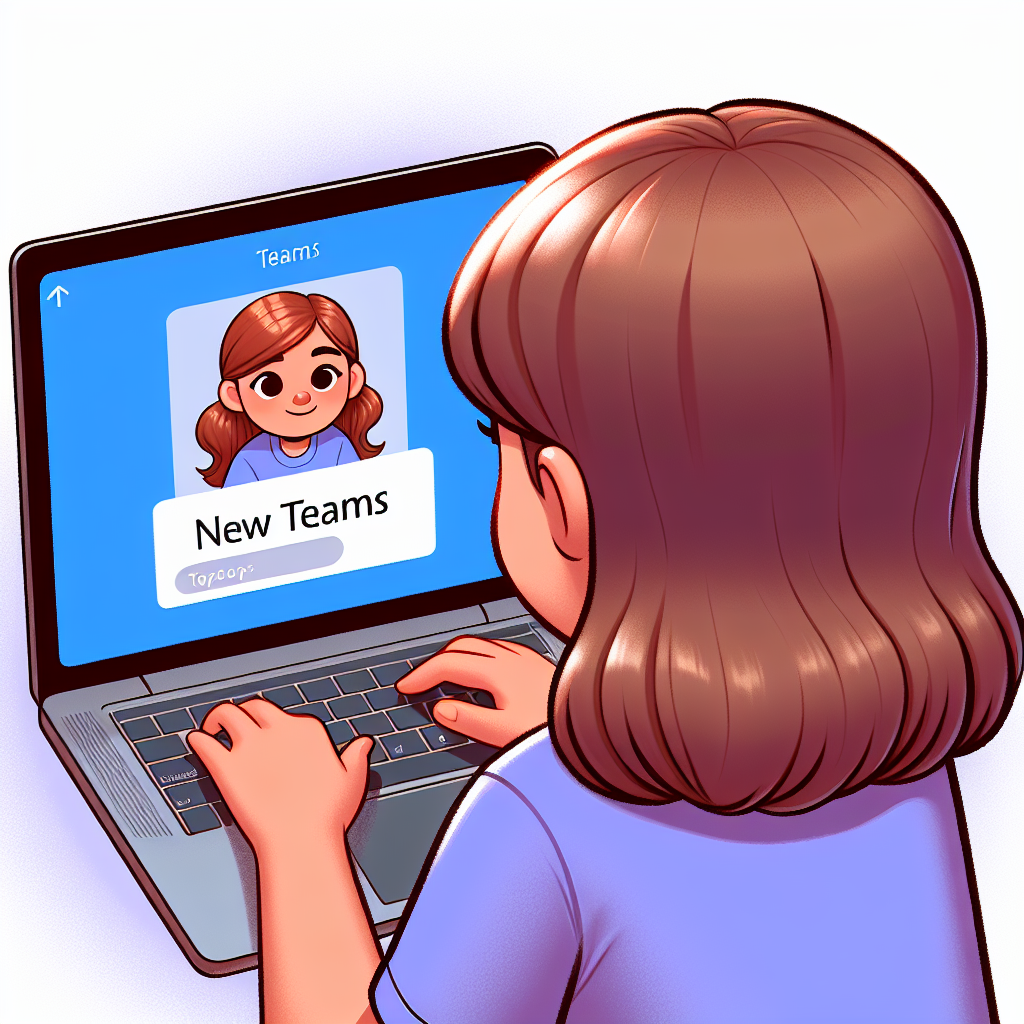
How to install New Teams with PowerShell Automation?
To install new teams with PowerShell in an Automated way I have written a script. The detail of the script is as follows.
Script Overview
My PowerShell script performs the following tasks:
- Creates a target directory if it does not already exist.
- Downloads the C++ Runtime, MSRDCWEBRTCSvc, and Microsoft Teams installers if they are not already present.
- Installs the downloaded components if they are not already installed.
- Logs each action to a log file for tracking and troubleshooting.
This is my GitHub repo link.
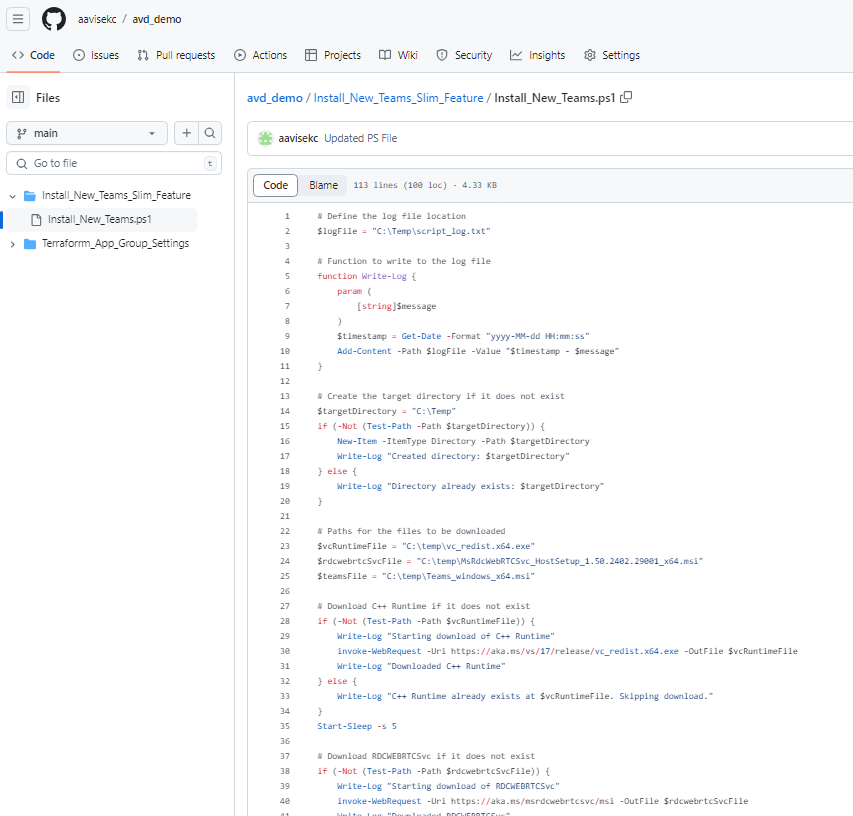
You can clone the script and modify it accordingly if required.
Conclusion
The new SlimCore architecture in preview for Microsoft Teams on Azure Virtual Desktop represents a significant step forward in optimizing remote work environments. By opting into this preview, organizations can enhance their Teams experience, ensuring better performance, reliability, and security. Don’t miss out on this opportunity to improve your virtual desktop infrastructure with the latest advancements in Teams technology.
For more information and detailed setup instructions, visit https://docs.microsoft.com/en-us/azure/virtual-desktop/teams-on-avd
Stay tuned for more updates and insights on optimizing your Azure Virtual Desktop experience! If you have any questions or need further assistance, feel free to reach out.



This is a valuable resource for anyone deploying Teams on Azure Virtual Desktop! The breakdown of Slimcore changes and the PowerShell script for deployment are particularly helpful. Thanks for sharing!